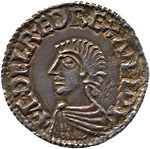
Figure 1 – Early English Pence of Aethelred the Unready*. The reverse bears a cross which made it convenient to divide the coin in halfpence or quarther pence referred to as farthings. Image from Arichis uploaded to the Wikipedia and placed in the public domain.
The other day I had gone out to take photographs in New York City and I found myself snapping away merrily – ’tis the season for merry! When I got home, I was curious how many photos I had taken and found that the number was 36. One roll, I thought to myself. In the good old days(?) 35 mm roll film used to come in 24 exposure and 36 exposure rolls. This is like a base twelve system of some sort and smacks of either a Babylonian (twelve sixty minute hours to the half day (sunrise to sunset) or old English (12 inches to the foot, 36 inches to the yard, twelve pence to the shilling, and twenty shillings or 240 pence to the pound) conspiracy. By the way at 36 mm x 26mm, 35 mm film wasn’t even 35 mm, which is another mystery.
Hmm, it’s all very strange and, of course, the reason that film is the way it is results from some historical vagaries. But it is not the only numerological oddity in photography. Why is the favorite aspect ratio today 6 x 4? 6/4 = 1.67. What about full frame 35 mm that’s 36/26 = 1.38. Think about the common paper sizes from when 35 mm film ruled. 8 x 10 gives us 1.25 as does 16 x 20. 11 x 14 gives us 1.27. All of these are very similar and almost compatible with 35 mm film, just a wee bit of cropping. But 5 x 7 gives us 1.4.
There is however, something really interesting about all of this. I try to standardize my aspect ration and only rarely go to a random freehand aspect ratio. But I typically find that 8 x 10 doesn’t feel quite right, nor does 5 x 7. What’s magical about 6 x 4?
The answer is, perhaps obvious. 1.67 is very close to the golden proportion or 1.6180339887. We have discussed this before. This proportion, as sides of a rectangle, was discovered by the ancient Greeks to be the most aesthetically pleasing. It often occurs in nature and the Greeks and later artists used and use it widely, for instance in defining the proportions of the Parthenon. It is also manifest in the approximation referred to as the Golden Rule of Thirds, which we have also discussed. All of this, is food for thought on a rather cold day. If it gets colder, I might just look into the details of the roll film sizes.
*Æthelred the Unready was king of England (978–1013 and 1014–1016). Unready” is a mistranslation of Old English unræd (meaning bad-counsel)—a twist on his name “Æthelred”, meaning noble-counsel. A better translation would be ill-advised.
